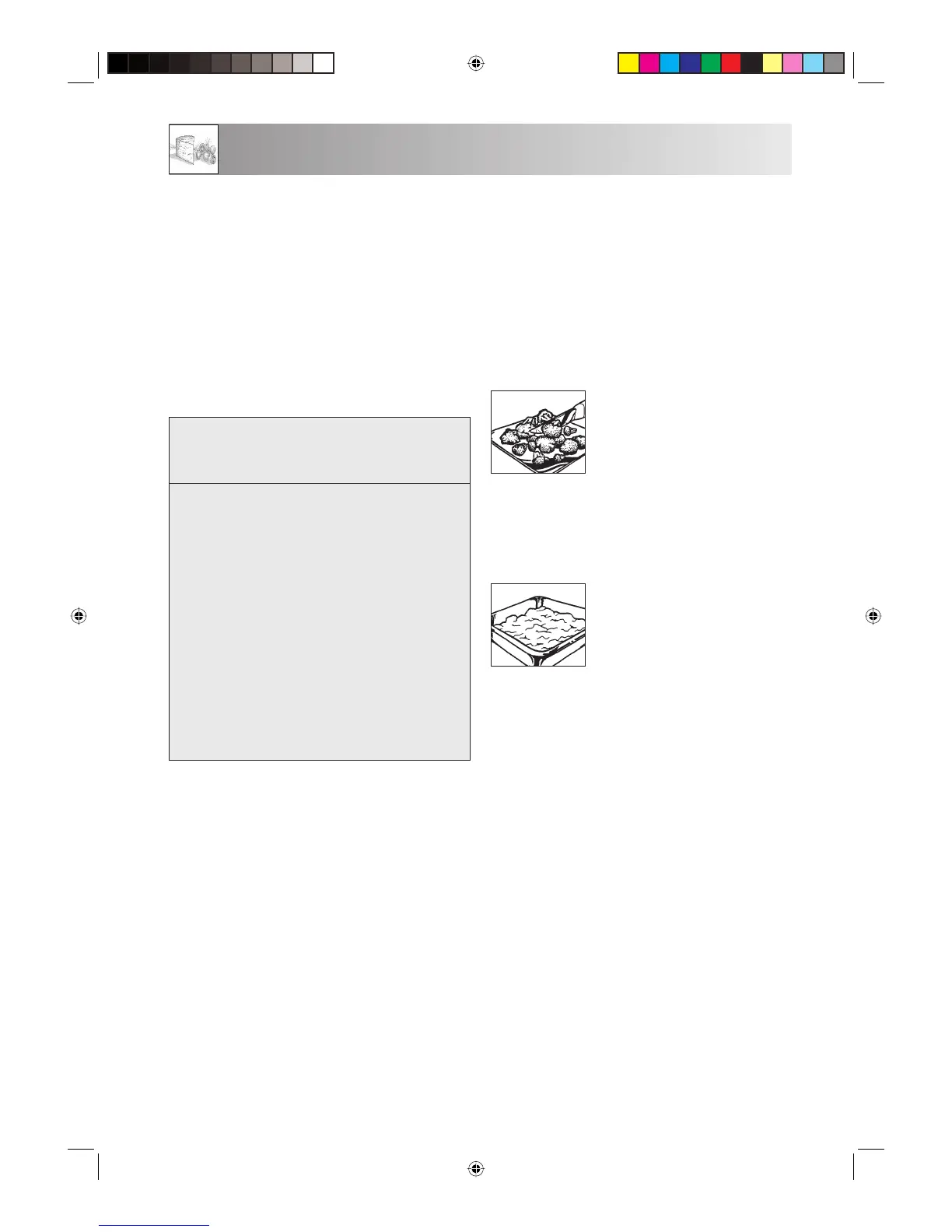GB-20
BLANCHING VEGETABLES
Vegetables should be blanched before being frozen.
The quality and flavours are best retained in this way.
Process: wash and chop the vegetables. Place 250 g of
vegetables with 275 ml of water into a dish and heat
while covered for 3-5 minutes. After blanching immerse
these immediately in iced water to prevent further
cooking and then drain. Pack the blanched vegetables
so that they are airtight and freeze.
BOILING DOWN FRUIT AND
VEGETABLES
Boiling down is fast and easy in a
microwave. Preserving jars, rubber
rings and suitable plastic preserving
clips that are appropriate for the
microwave are available in retail
outlets. The manufacturers give exact
instructions for use.
SMALL AND LARGE QUANTITIES
Microwave times depend directly on the quantity of
food that you wish to thaw, heat or cook. This means
that small portions cook faster than large portions.
The following applies as a rule of thumb:
DOUBLE QUANTITY = ALMOST
DOUBLE THE TIME
HALF QUANTITY = HALF THE
TIME
TALL AND SHALLOW DISHES
Both dishes have the same capacity but the cooking
time is longer in the tall format than in the shallow
format. So opt for the shallowest possible dishes with a
large surface area. Only use tall dishes for meals where
there is a danger of overcooking, e.g. for noodles, rice,
milk, etc.
ROUND AND OVAL DISHES
Food cooks more evenly in round and oval shapes
than in rectangular shapes, as the microwave energy
gets concentrated in corners and the food can become
overcooked at these points.
SETTING THE COOKING TIME WITH
THE FOOD THERMOMETER
Every drink and every food has a specific internal
temperature at the end of the cooking process, at which
the cooking process can be ended and the result is
good. You can determine the internal temperature with
a food thermometer. The most important temperatures
are given in the temperature table.
TABLES FOR SETTING THE
COOKING TIME WITH THE FOOD
THERMOMETER
Drinks/food
Internal
temperature
at the of minutes
Internal
temperature up
to 10 to 15 of
standing time
Heating drinks
(coffee, water,
tea, etc.)
Heating milk
Heating soups
Heating stews
Poultry
Lamb
Rare cooked
Well cooked
Beef
Rare roast
Medium cooked
well done
Pork, Veal
65-75°C
60-65°C
75-80°C
75-80°C
80-85°C
70°C
75-80°C
50-55°C
60-65°C
75-80°C
80-85°C
85-90°C
70-75°C
80-85°C
55-60°C
65-70°C
80-85°C
80-85°C
ADDING WATER
Vegetables and other foods that contain a lot of water
can be cooked in their own juice or with a little added
water. This means that many vitamins and minerals are
retained in the food.
FOOD WITH SKIN OR SHELLS
Pierce items such as sausages, chicken, chicken legs,
jacket potatoes, tomatoes, apples, egg yolk or similar
foods with a fork or wooden skewer. This allows the
steam that builds up to escape without the skin or shell
bursting.
FATTY FOODS
Meat with streaks of fat and layers of fat cook faster
than lean portions. As a result cover these portions
when cooking with some aluminium foil or place the
food with the fatty portions at the bottom.
TIPS AND TECHNIQUES
R-68ST-A [06_02 EN] CkBk.indd 20R-68ST-A [06_02 EN] CkBk.indd 20 7/22/09 6:50:53 PM7/22/09 6:50:53 PM
